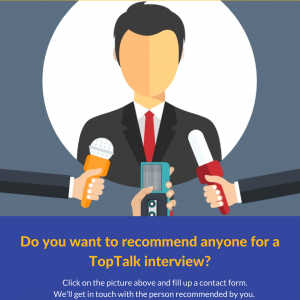 Brad is an author, a speaker, and consultant with more than 25 years of corporate experience in various aspects of human resources including performance management and employee engagement, employee compensation, executive recruiting, change management and instructional design. His background also includes sales, marketing, product development, and operations.
Brad is an author, a speaker, and consultant with more than 25 years of corporate experience in various aspects of human resources including performance management and employee engagement, employee compensation, executive recruiting, change management and instructional design. His background also includes sales, marketing, product development, and operations.
Brad works with clients to strengthen their brands through Culture, leadership and people initiatives. He helps clients develop the best talent and reputation and provides them with the tools to help clients become the organization of choice for both employees and customers.
He is a member of the Forbes Coaches Council, a frequently requested featured speaker for television, conferences and business meetings worldwide, an author of three books and has been interviewed for national publications.
What does employee engagement mean to you?
Employee engagement means higher profits and better attendance. Increased shareholder value. A stronger safety record. But most importantly it means both the employer and the employee benefit. The employer/employee contract that used to exist is gone. It is no longer about tenure or being a good corporate citizen. Today’s relationship is uniquely different. Employees have a 30-50 year career window where they have to produce income. They will need to do this without a safety net. There is no such thing as lifetime employment. They will need to stay competitive and have a strong and relevant skill set. They will need to be able to function independently and interdependently in fast-changing and ambiguous situations. Employers that provide robust development, challenging opportunities and an environment where an employee can help drive the company forward through their own choices, decisions and work style can expect to keep people longer and see better performance along the way. They can’t expect loyalty in the old manner. Employees won’t salute and answer yes, but they will ask why. They will challenge the status quo. That is a new loyalty. Giving it their all and questioning current reality. Both the employer and the employee have to give something to make it work and they both get something in return.
How to measure employee engagement?
There are a number of ways to measure employee engagement. The first way is to use a traditional employee engagement survey. They work well, but there are challenges. People can burn out on surveys. The biggest challenge is that organizations spend their time and energy measuring engagement and very little time and money actually addressing it. Eighty cents on the dollar should be spent on influencing engagement. The other challenge is that organizations get caught up in the score. They want the numbers to always rise and that is unrealistic. It is a measurement tool, like having a physical and it should be viewed in that manner. Another measurement tool is a pulse dialogue survey. This is a survey typically completed once a month or a quarter that only has one or two items/questions. Typically one question is a Likert scale question and then the other is open-ended allowing the person to comment on why they provided that rating or what the company can do to improve that rating. Companies use this method to quickly address issues going on such as increasing trust, improving benefits, responding to challenges with organizational change or the impact of a merger. They also use it to ensure senior leadership hears from employees and that senior leadership responds back. There are countless ways to measure. We have to also help individuals measure their own engagement and understand how they can get themselves more engaged and help engage their colleagues. Now that is interesting because the level of accountability goes way up.
What are the common causes of employee disengagement?
Disengagement is a personal thing. Each person engages for their own reasons and also disengage for their own reasons. Most of the time people disengage because they are not challenged, not growing, or because they do not feel valued, respected and safe at work. Another big reason has to do with the brand of the organization. Employees want to feel a sense of pride. When their organization has a strong respected brand they are more likely to be engaged. One aspect of the brand is the ability for the brand to impact the local and/or broader community. Especially with the younger generations, employees want to feel they are making a difference. They want to know that their organization is more than a profit center.
What are the drivers of employee engagement in today’s fast-moving world?
There are a number of drivers that engage employees, but let me highlight two. First is career and skill development. People need to feel they are more marketable in the job market this year over last. They need to feel their skill set has improved this year over last. The second driver is appreciation. Employees do not want recognition, but to feel appreciated. Really appreciated. This is an area where most organizations fall short. They have recognition programs because they have been told to. But the day-to-day culture sends a very different message to their employees.
What makes a really effective employee engagement programme? Any best practices to share.
The most effective program is not making it a program. At the center of engagement are two things. Engagement is personal and about relationships. Organizations that remember those two factors are more successful than others. To make engagement effective it needs to become part of your culture. It needs to be reflected in your leadership and management style. Engagement has to be woven into the way we work. One key we work on with clients is changing the way they meet. Your meetings and dialogue should reflect engagement. If implemented well, employee engagement becomes part of the fabric of your culture and how you operate affects everything from hiring to decision making and from leadership to the way you let people go.
